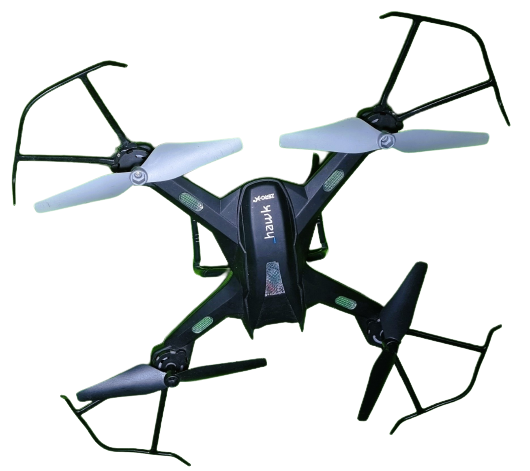
Mastering Flight: Understanding the Control of Quadcopter Motions
Introduction:
Quadcopters, also known as quadrotors or quadrotor helicopters, are a type of unmanned aerial vehicle (UAV) or drone that is powered by four rotors. They are called quadcopters because they have four vertically oriented rotors, with two rotating clockwise and the other two rotating counterclockwise. The design of quadcopters allows them to achieve vertical takeoff and landing (VTOL) capabilities, hover in place, and maneuver in various directions. By adjusting the speed and pitch of each rotor independently, quadcopters can change their altitude, yaw (rotation around the vertical axis), roll (rotation around the longitudinal axis), and pitch (rotation around the lateral axis). Quadcopters are popular among hobbyists, aerial photographers, and researchers due to their stability, maneuverability, and versatility. They can be equipped with various sensors, cameras, and other payloads to perform a wide range of tasks, including aerial photography and videography, surveillance, search and rescue operations, mapping, agriculture, and even delivery services. Furthermore, quadcopters have become increasingly accessible to consumers with the advancement of technology, making them widely available for recreational use. They are controlled remotely using a handheld transmitter or a mobile device, and some models even offer autonomous flight capabilities and obstacle avoidance systems. It's important to note that while quadcopters are a specific type of drone with four rotors, the term "drone" can also refer to other types of unmanned aerial vehicles with different configurations, such as hexacopters (six rotors) and octocopters (eight rotors). Quadcopters have gained significant popularity in recent years due to their versatility and wide range of applications. These agile aerial vehicles rely on precise control mechanisms to achieve stable flight and perform complex maneuvers. In this article, we will explore the fundamental principles behind quadcopter motion control, including the essential components and control algorithms involved.

1. Quadcopter Components:
A quadcopter comprises several key components that work together to control its motions:
Frame: The frame serves as the structural backbone, housing the electronic components and supporting the propellers.
Motors: Four motors are attached to the frame, with two rotating clockwise (CW) and the other two rotating counterclockwise (CCW). These motors generate the thrust required for flight.
Propellers: Each motor is equipped with a propeller, responsible for generating lift and controlling the quadcopter's orientation.
Electronic Speed Controllers (ESCs): ESCs regulate the speed of each motor based on the control signals received.
Flight Controller: The flight controller is the brain of the quadcopter, consisting of a microcontroller, sensors (such as gyroscopes, accelerometers, and magnetometers), and firmware. It processes data from the sensors and executes control algorithms to stabilize the quadcopter.
2. Basic Motions and Degrees of Freedom:
A quadcopter can perform various motions, including:
a. Roll: Rotation around the longitudinal (front-to-back) axis, causing the quadcopter to tilt sideways.
b. Pitch: Rotation around the lateral (side-to-side) axis, causing the quadcopter to tilt forwards or backward.
c. Yaw: Rotation around the vertical (up-down) axis, allowing the quadcopter to rotate left or right.
d. Vertical ascent/descent: Controlled changes in altitude by adjusting the thrust of all four motors.
These motions are achieved by manipulating the speeds of the individual motors.
3. Control Algorithms:
To control the quadcopter's motions, sophisticated control algorithms are employed. The most common approach is the Proportional-Integral-Derivative (PID) controller, which adjusts the motor speeds based on the difference between desired and actual orientation angles.
a. Roll and Pitch Control:
The PID controller takes input from the gyroscope sensors to measure the quadcopter's roll and pitch angles. It compares these angles with the desired angles provided by the pilot or an autopilot system. The PID controller calculates the necessary motor speed adjustments to bring the quadcopter back to the desired angles.
b. Yaw Control:
To control the quadcopter's yaw motion, the PID controller utilizes the magnetometer sensor, which provides information about the quadcopter's heading or compass direction. By comparing the desired heading with the actual heading, the PID controller adjusts the speeds of the motors accordingly to achieve the desired yaw motion.
c. Altitude Control:
Quadcopters regulate their altitude by adjusting the collective thrust of all four motors. The PID controller utilizes data from the accelerometer and barometer sensors to maintain the desired altitude. By continuously monitoring the altitude and comparing it to the target value, the controller adjusts the motor speeds to ascend or descend.
4. Flight Modes and Advanced Control:
Quadcopters often offer different flight modes to suit various applications and skill levels. These modes can include manual mode, stabilize mode, altitude hold mode, position hold mode, and autonomous flight modes.
Advanced control techniques, such as model predictive control, optimal control, and adaptive control, are being explored to enhance the performance of quadcopters. These techniques aim to optimize the control inputs to achieve better stability, maneuverability, and response time.